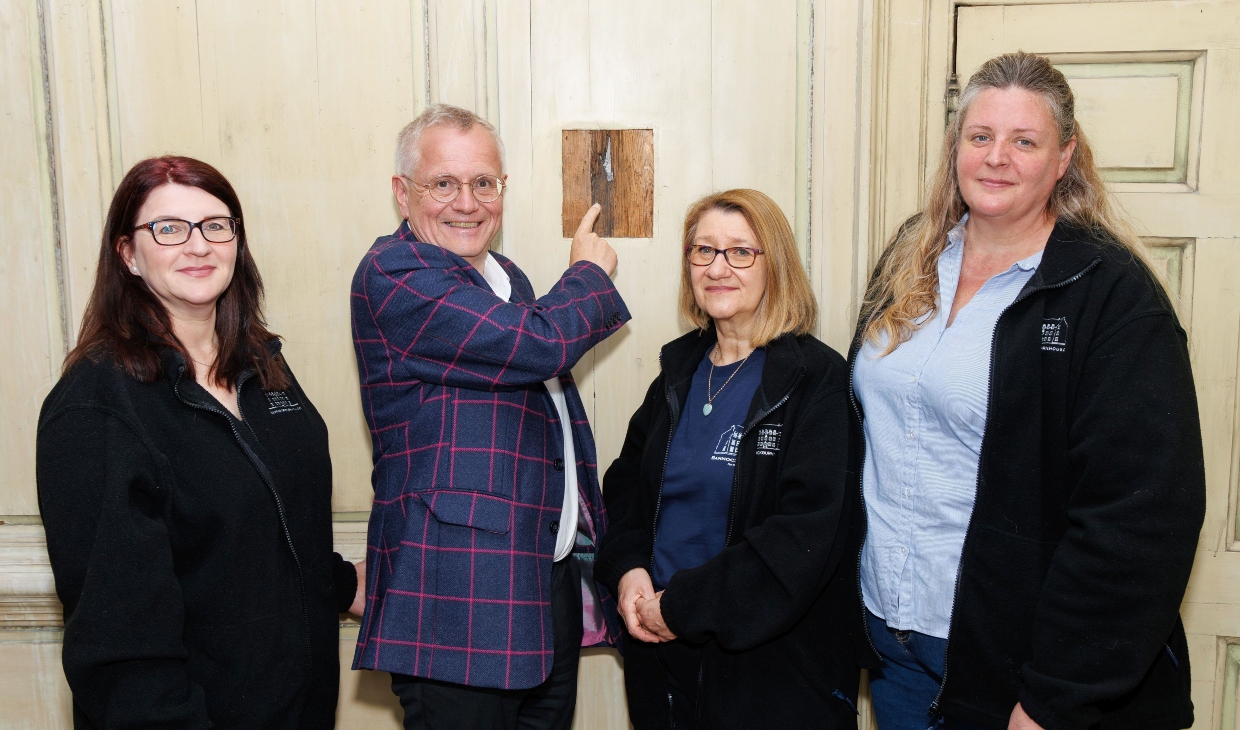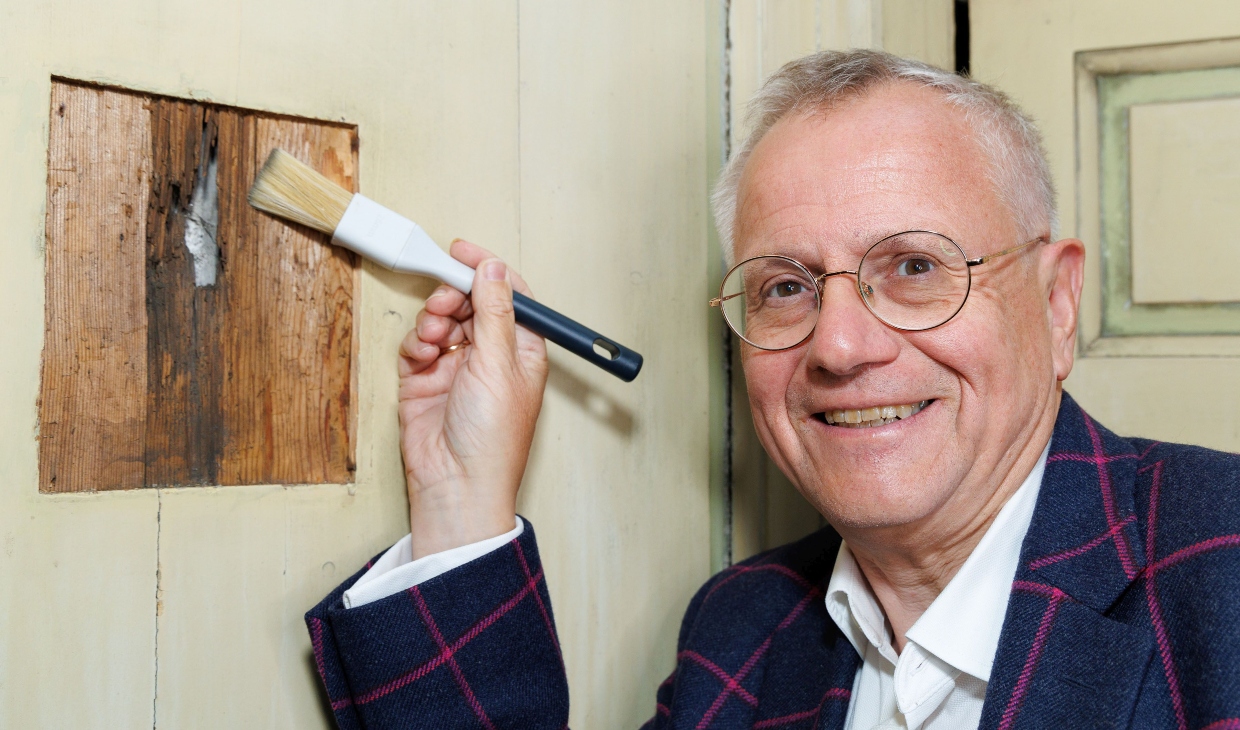Stirling student’s historic discovery at Bannockburn House “confirms” Bonnie Prince Charlie assassination attempt
A University of Stirling PhD student has made a fascinating discovery that appears to confirm a previously unevidenced assassination attempt on Bonnie Prince Charlie.
/filters:format(webp)/filters:no_upscale()/prod01/cdn/media/stirling/news/news-centre/2024/july/BBurn-1920X689.jpg)
A University of Stirling PhD student has made a fascinating discovery that appears to confirm a previously unevidenced assassination attempt on Bonnie Prince Charlie.
While carrying out conservation work with colleagues, Catherine Bradley uncovered a musket ball hole and impact crater in the wood-panelled walls of 17th century, A-listed Bannockburn House, where she is lead volunteer researcher.
Historians have now confirmed that the hole is “almost certainly” evidence of an assassination attempt on Prince Charles Edward Stuart, better known as Bonnie Prince Charlie, who stayed at the House in 1746, after taking ill during the Jacobite Rising. Folklore passed through generations suggests he was shot through his first-floor bedroom window, with the bullet lodging itself in the wall beside his bed. During his stay, the Prince struck up a romance with Clementina Walkinshaw, the niece of house owner Sir Hugh Paterson, 3rd Baronet of Bannockburn.
 University of Stirling PhD student Catherine Bradley (right) was part of the volunteer team that made the historic discovery.
University of Stirling PhD student Catherine Bradley (right) was part of the volunteer team that made the historic discovery.
History lover Catherine – who is just about to complete an unrelated PhD with the University’s Faculty of Health Sciences and Sport – made the discovery while volunteering at the house. She explained the discovery came about after they received a crucial lead from an Edinburgh man whose aunt was housekeeper for the last owner in residence. He told Anne Monaghan, Bannockburn House’s History Team Lead, that his aunt had taken great pride in looking after the bullet hole.
Catherine explained: “Anne and I noticed what appeared to be the edge of an inset panel in the wall when cleaning out the room furniture recently for conservation. I suspected that is where it may have been. It is across from a window, now hidden by panelling later put in the room sometime in the 1880s. I just didn’t have the evidence to look until now.
“It was an exciting moment as I opened it. I carefully lifted the panel and saw the splintered wood and I knew we’d found something very special. Anne asked me what I saw, and I remember giggling and saying, wonderful things! I knew we needed to be very careful not to damage it, so we documented it, covered it back up, and called in the cavalry.”
 The discovery was confirmed by Jacobite historian Murray Pittock.
The discovery was confirmed by Jacobite historian Murray Pittock.
Jacobite historian Professor Murray Pittock, of the University of Glasgow, and Stirling Council Archaeologist, Dr Murray Cook, both confirmed the authenticity of the find.
Professor Pittock said: “I am pleased to endorse that Bannockburn House Trust has almost certainly discovered forensic evidence of an assassination attempt on Prince Charles in 1746. This is critically important not only for our understanding of the Rising but also for the role the attack may have played in intensifying the relationship between Charles and Clementina Walkinshaw, which led to the birth of his only child.”
Dr Cook said: “I have visited the bedroom many times over the years and always tried to imagine the Prince and the resulting confusion from the musket fire and sounds of smashing glass alerting everyone to the assassin. However, to see the damage and to touch the spot sent a thrill down my spine and incredible tangible experience and worth visiting Bannockburn House for this alone.”
Passion for history
Catherine, from the United States, moved to Stirling in 2018 to study her sixth degree. She is a clinical doctorate student, and her thesis considers post-operative pain management after open heart surgery. She enjoys using her passion for history and her research skills honed at Stirling to volunteer with Bannockburn House.
Reflecting on the find, Catherine added: “This is a really important historical discovery because there’s no primary source evidence in the literature of this assassination attempt.”
Bannockburn House is currently trying to raise funds to restore the building, which is currently suffering from water ingression due to its deteriorating 17th century roof. Restoration to its original condition is estimated to cost millions of pounds.
More information on Bannockburn House and the renovation plans are available on its website.
